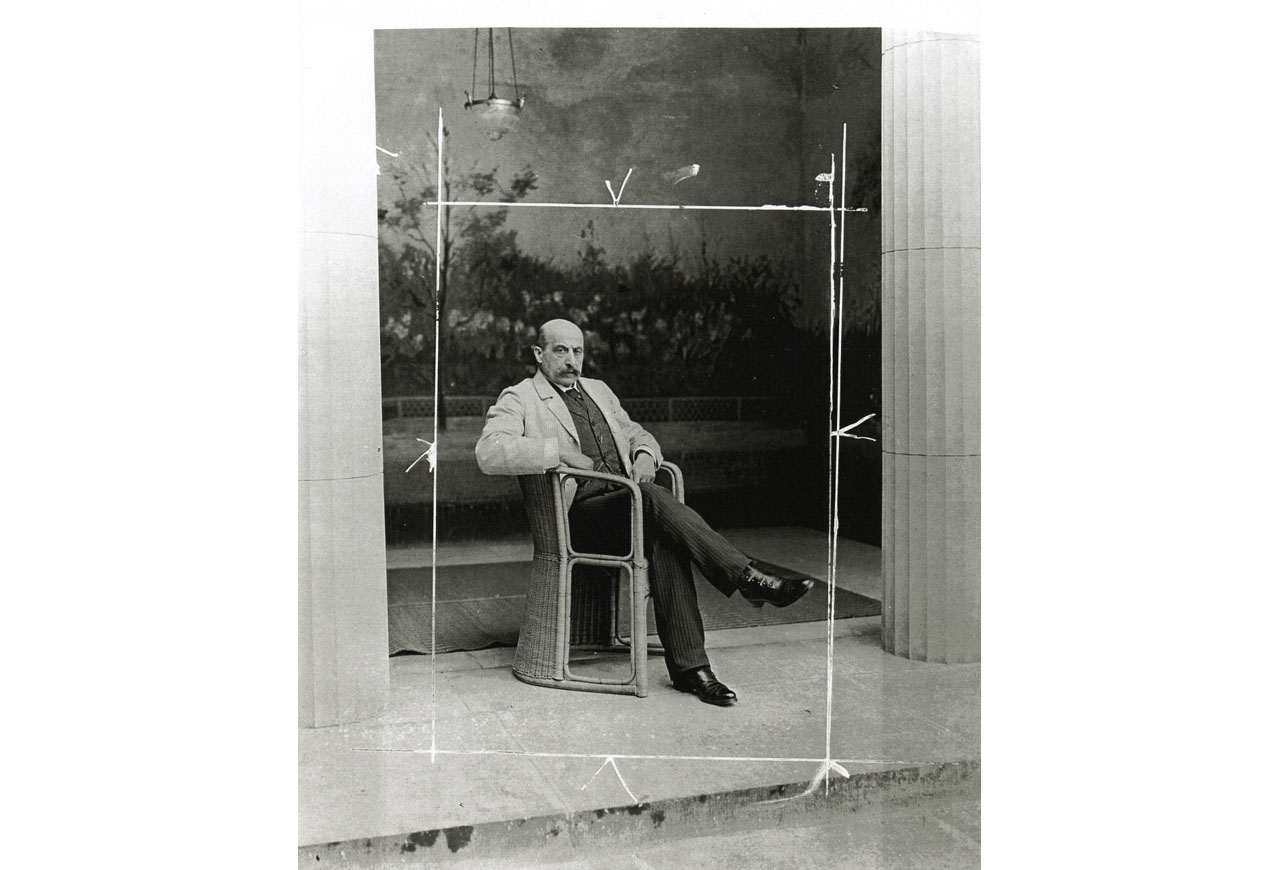
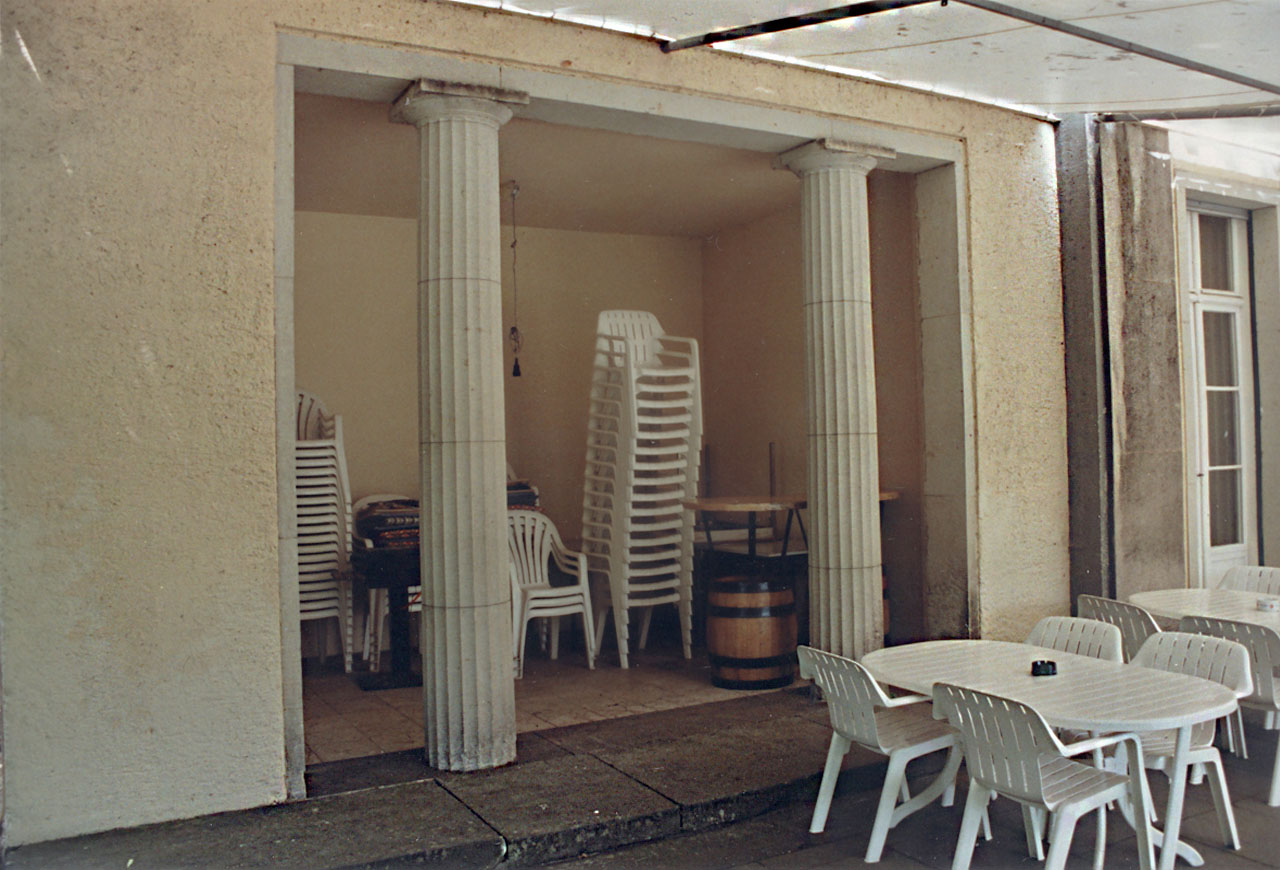
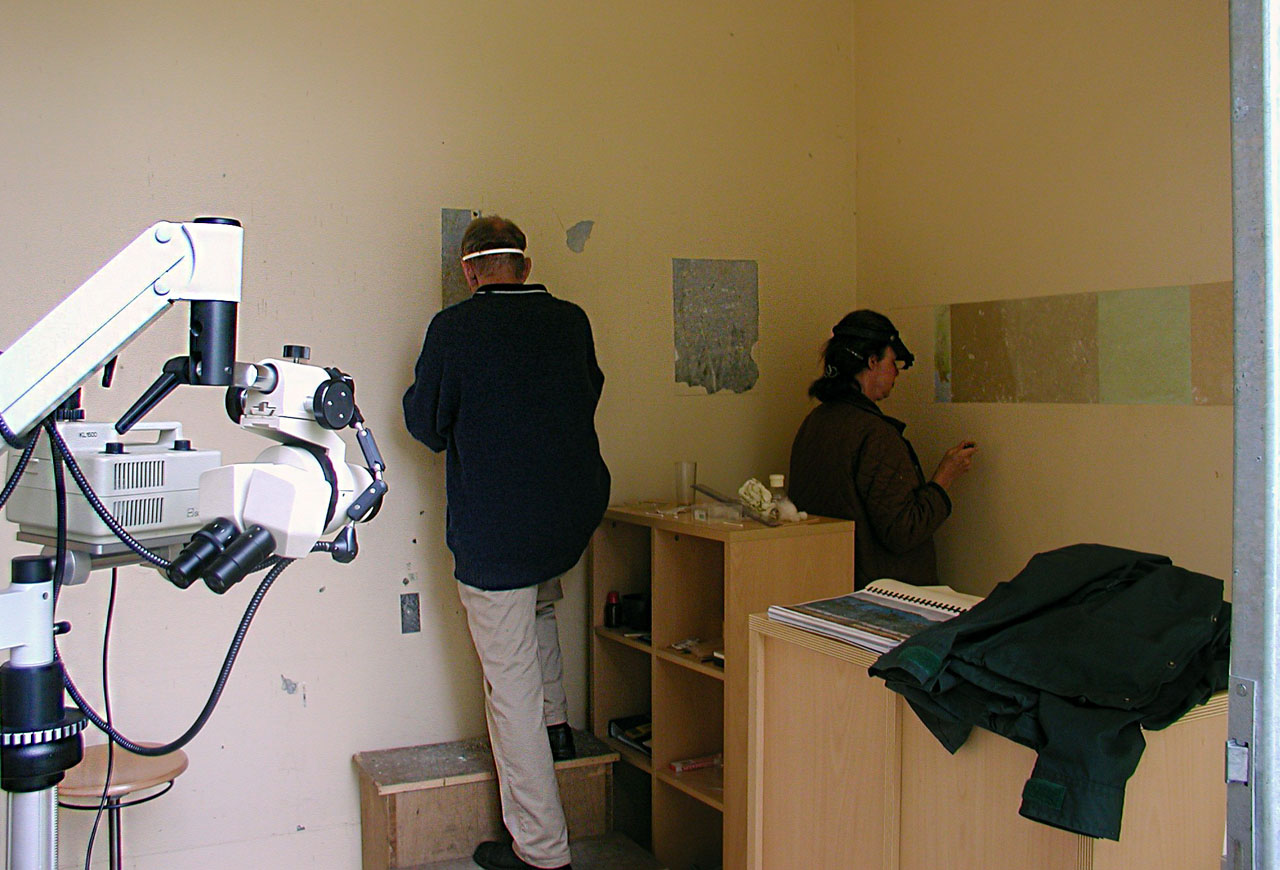
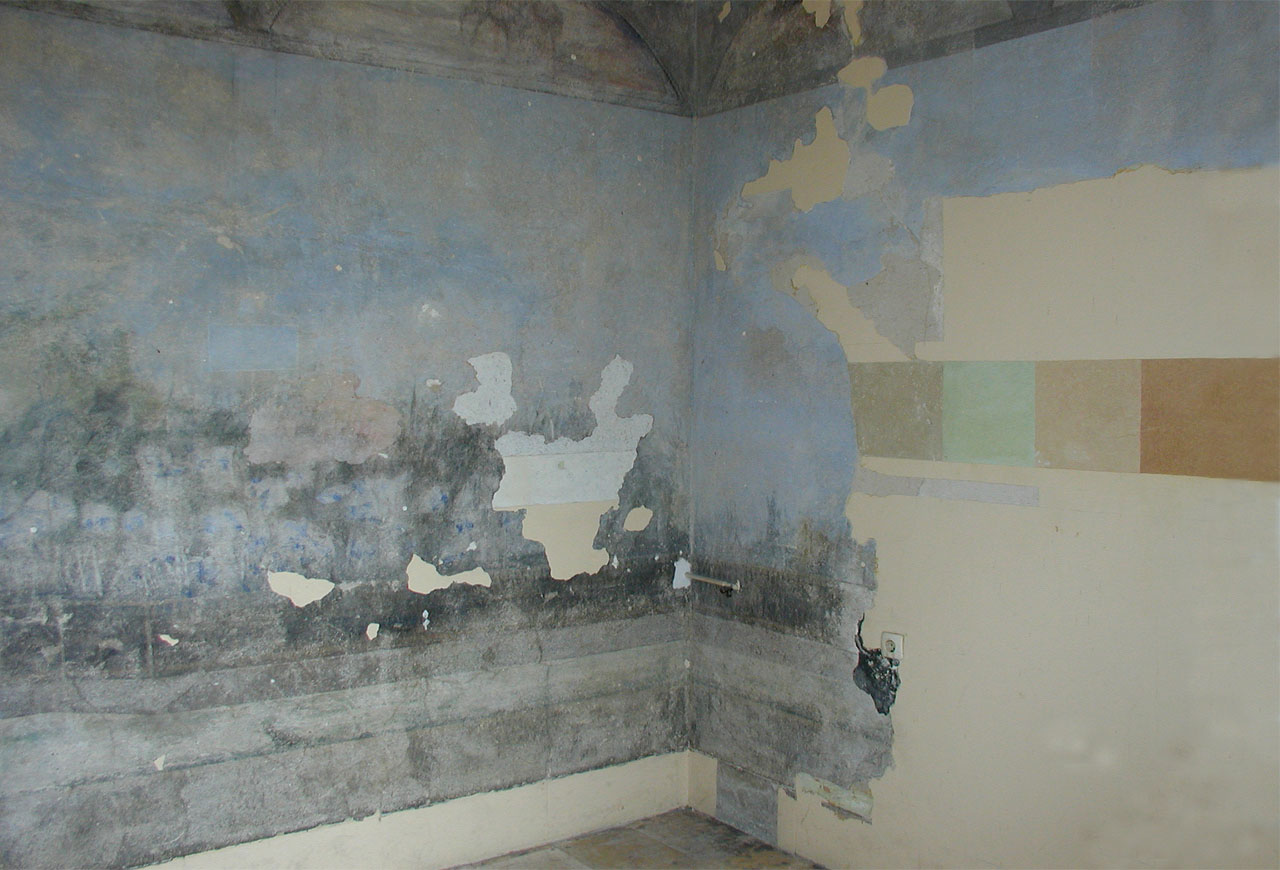
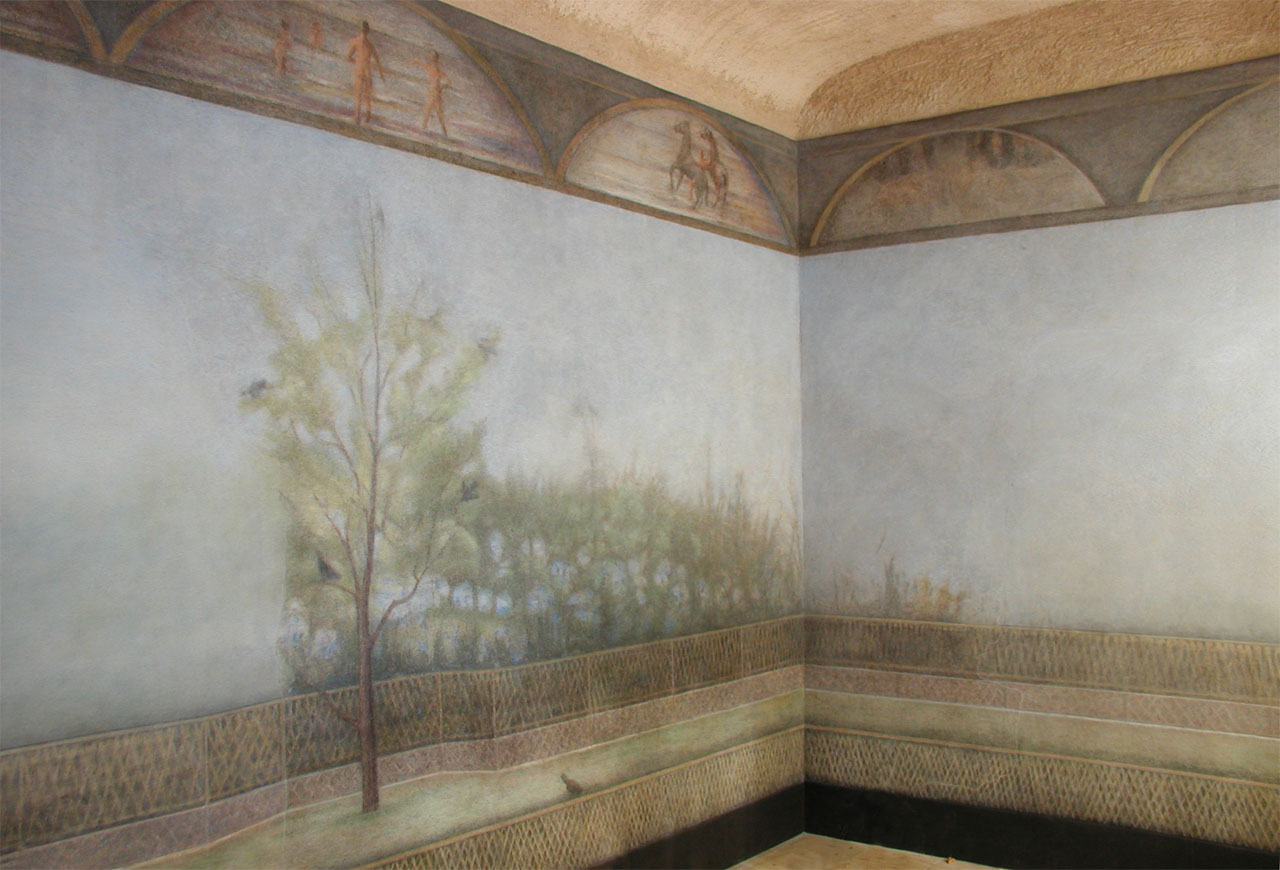
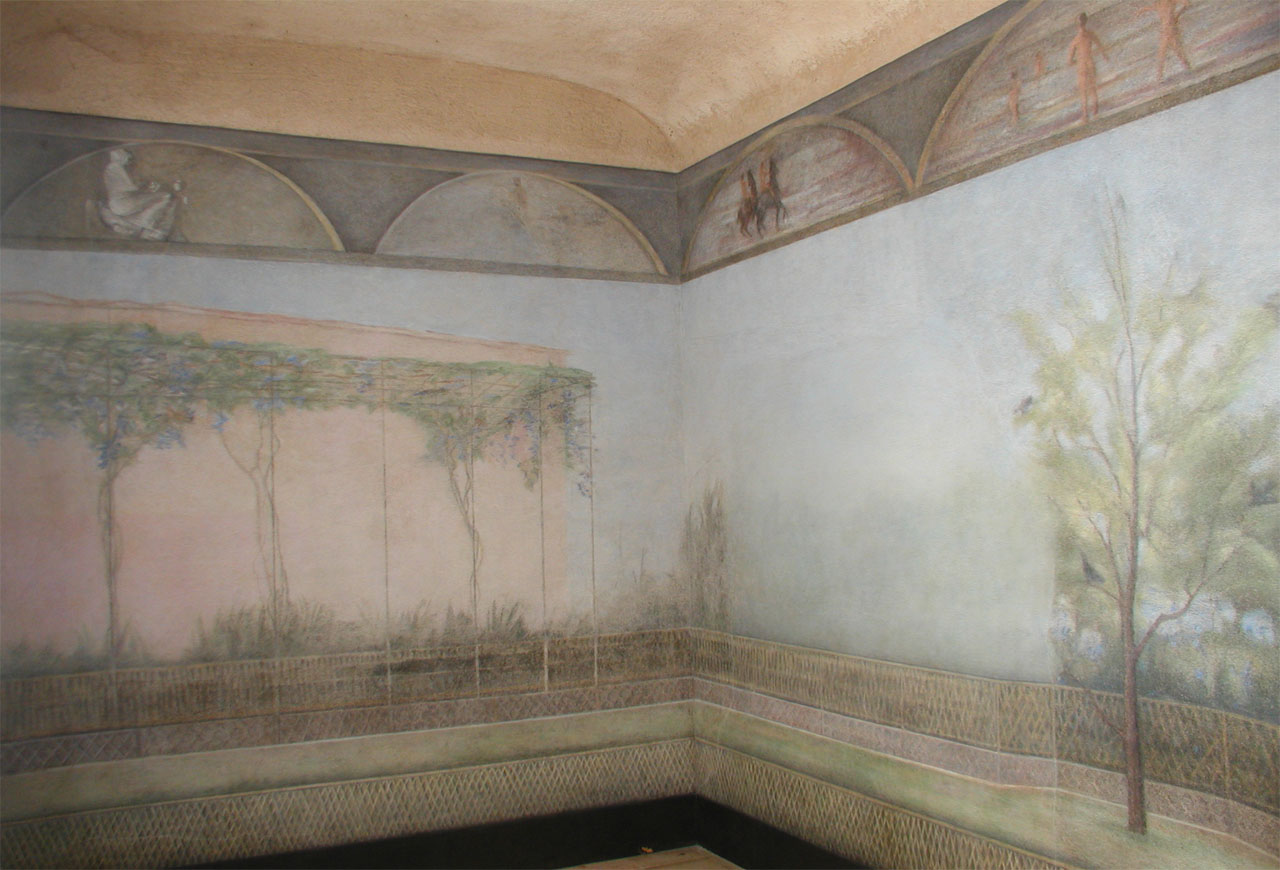
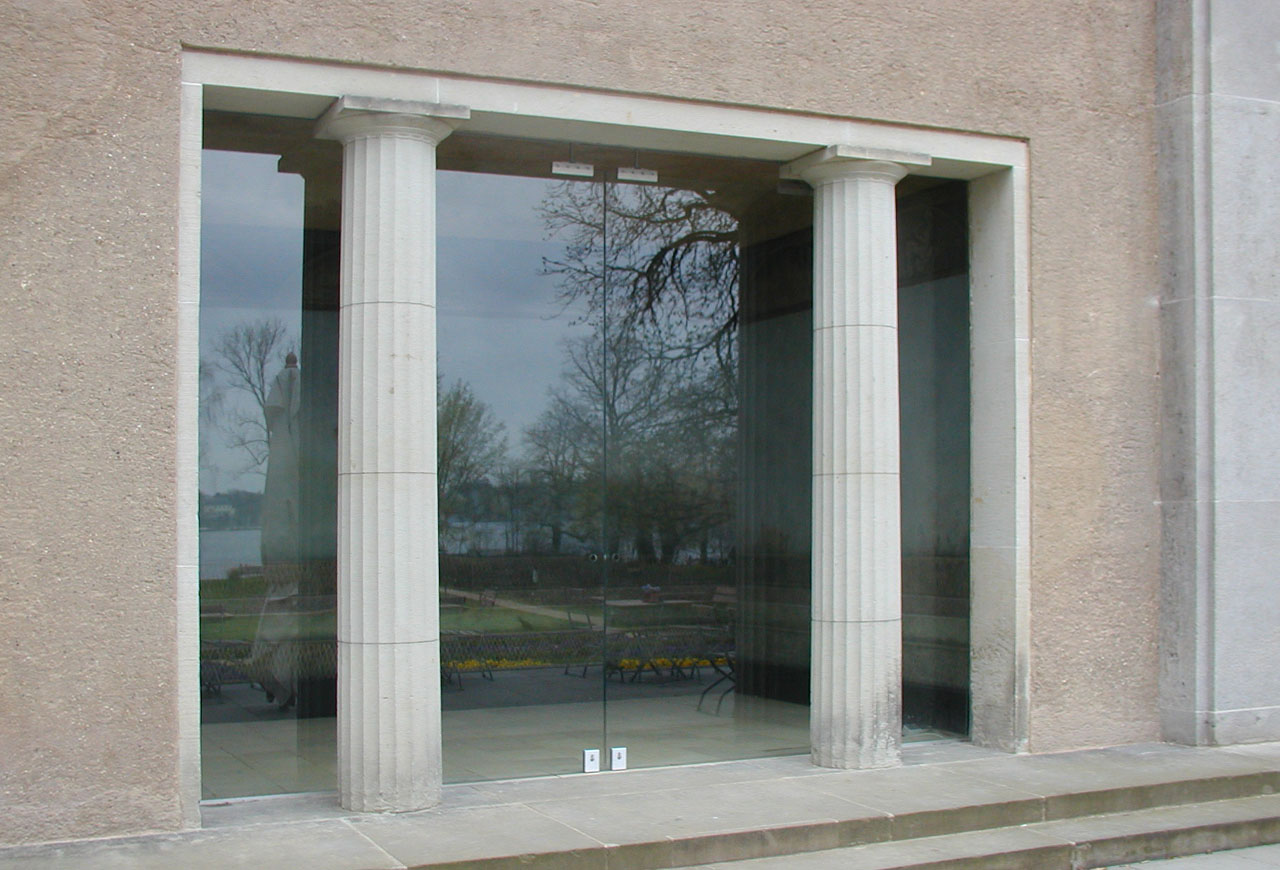
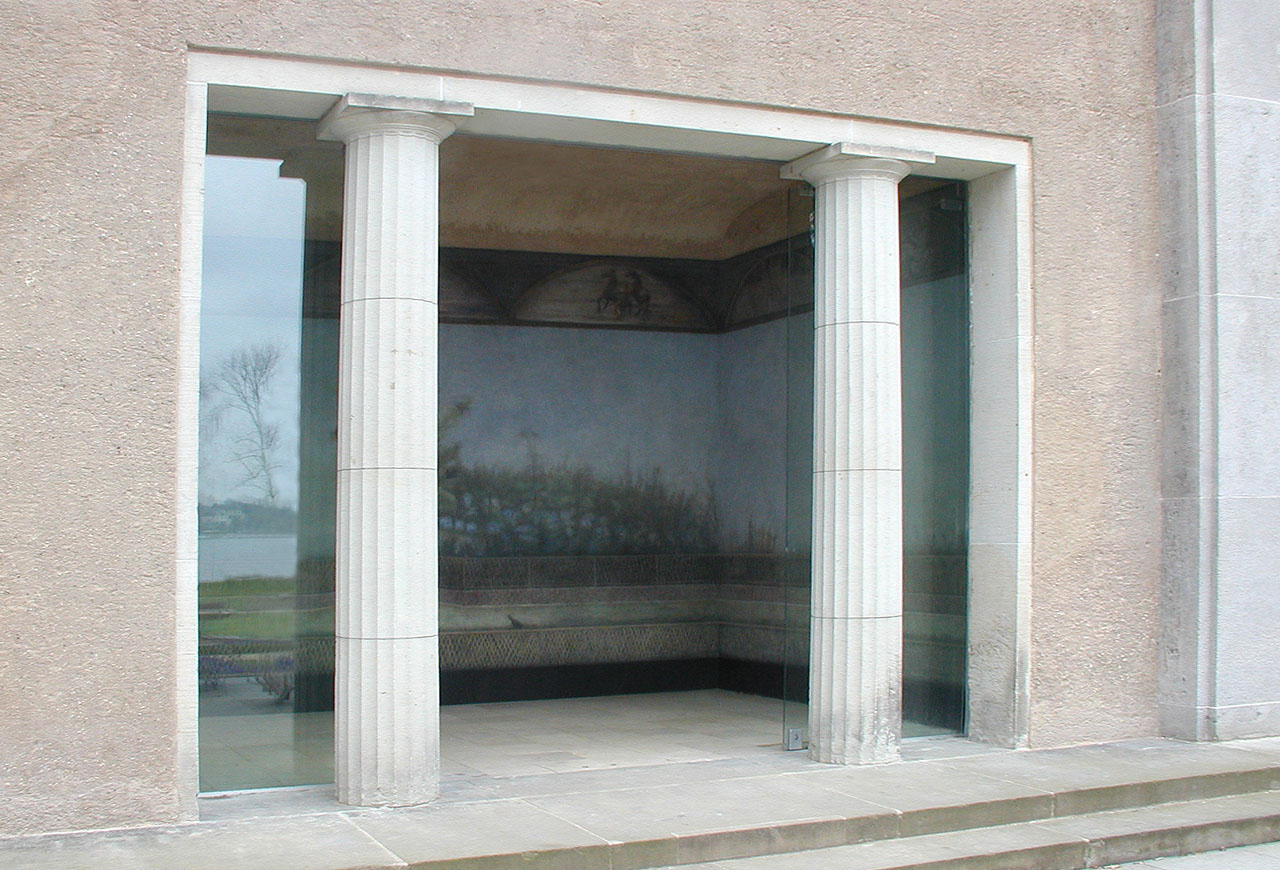
The Garden Loggia
The discovery of the only remaining wall painting from Max Liebermann underneath 14 layers of paint was a little sensation. In 1914 the women’s magazine "Die Dame" had published an illustration titled ‘Liebermann in the photographic studio’. Research revealed that it showed a photo detail of the Wannsee garden loggia with a surprising art-historical background. In 1911, following his return from Rome, the artist had painted his ‘impressio-nist interpretation’ of the famous garden hall of the Villa di Livia in his own garden hall. In 2003 a restoratory survey revealed this mural by Max Liebermann. In the course of three years restorer Rolf-Gerhard Ernst and his team carefully uncovered, documented, secured and restored it.
Liebermann had adapted the Roman subject to the spatial dimensions of his garden loggia. The motif of the gardens of paradise strengthens the link between interior and exterior and simulates the continuation of the terraces into the house. Restoratory work uncovered a vaulted ceiling (imitating the grotto character of the Villa di Livia’s garden hall) and the decorative frieze at the top of the three walls, whose lunettes are painted with mo-tifs from the Ludovisi throne and Liebermann’s own paintings, the bathing boys and the horses on the beach. In 1927, when Liebemann renovated his house, he painted the Loggia in white.
As a protection against climate and vandalism, the loggia’s opening was closed with frameless glazing with sliding doors which enable museum visitors to enter the loggia and admire Liebermann’s synthe-sis of architecture, garden design and art from this special vantage point.








